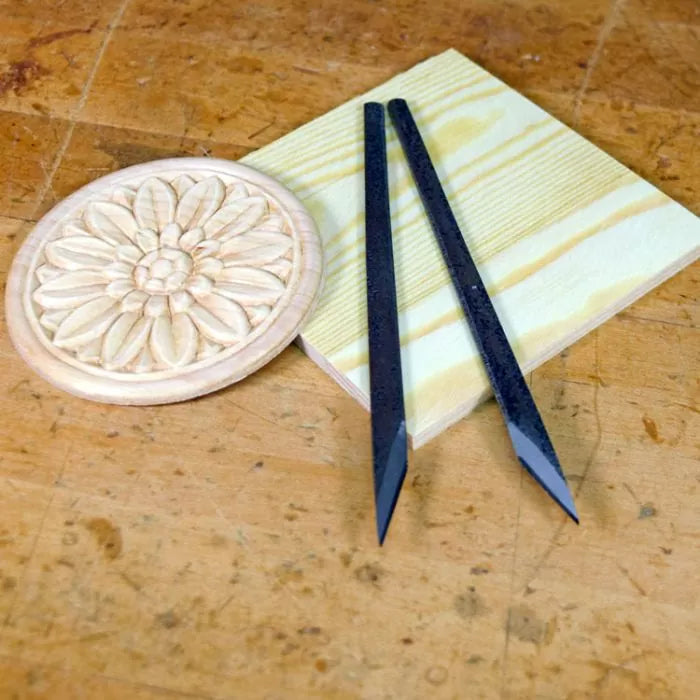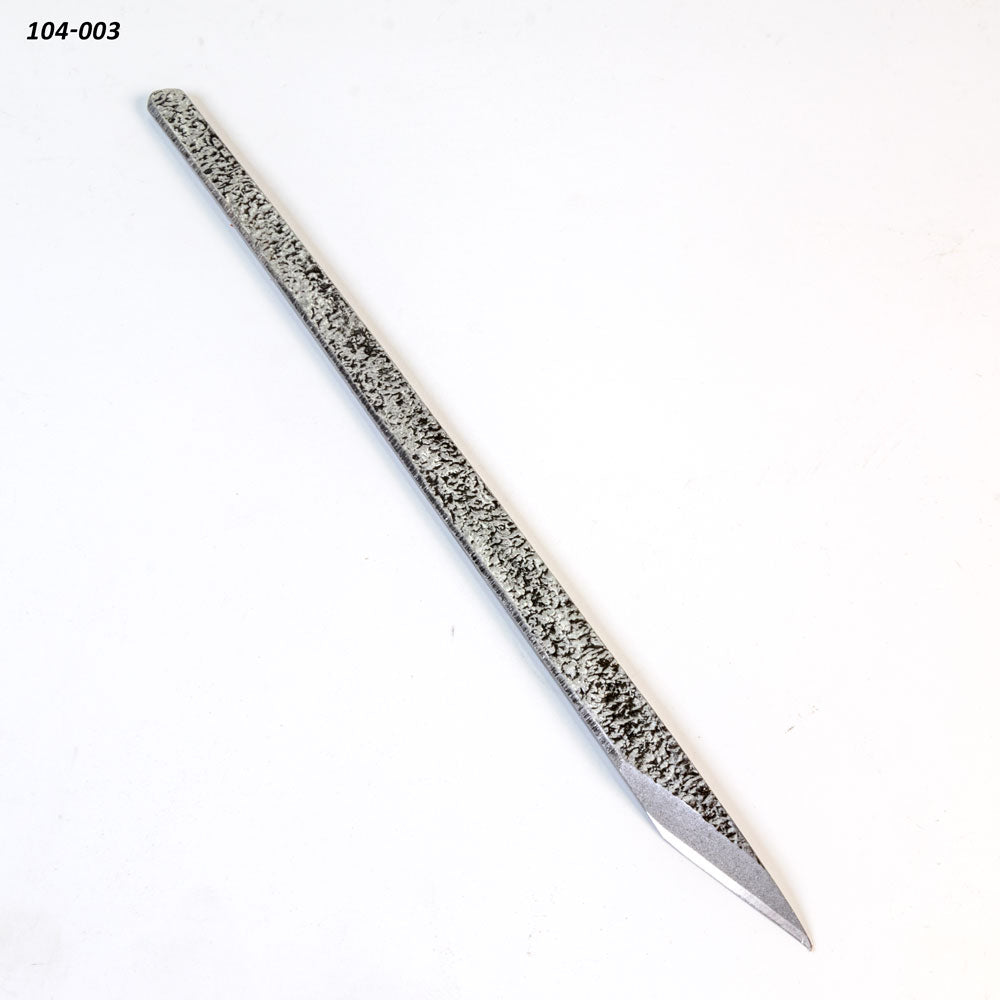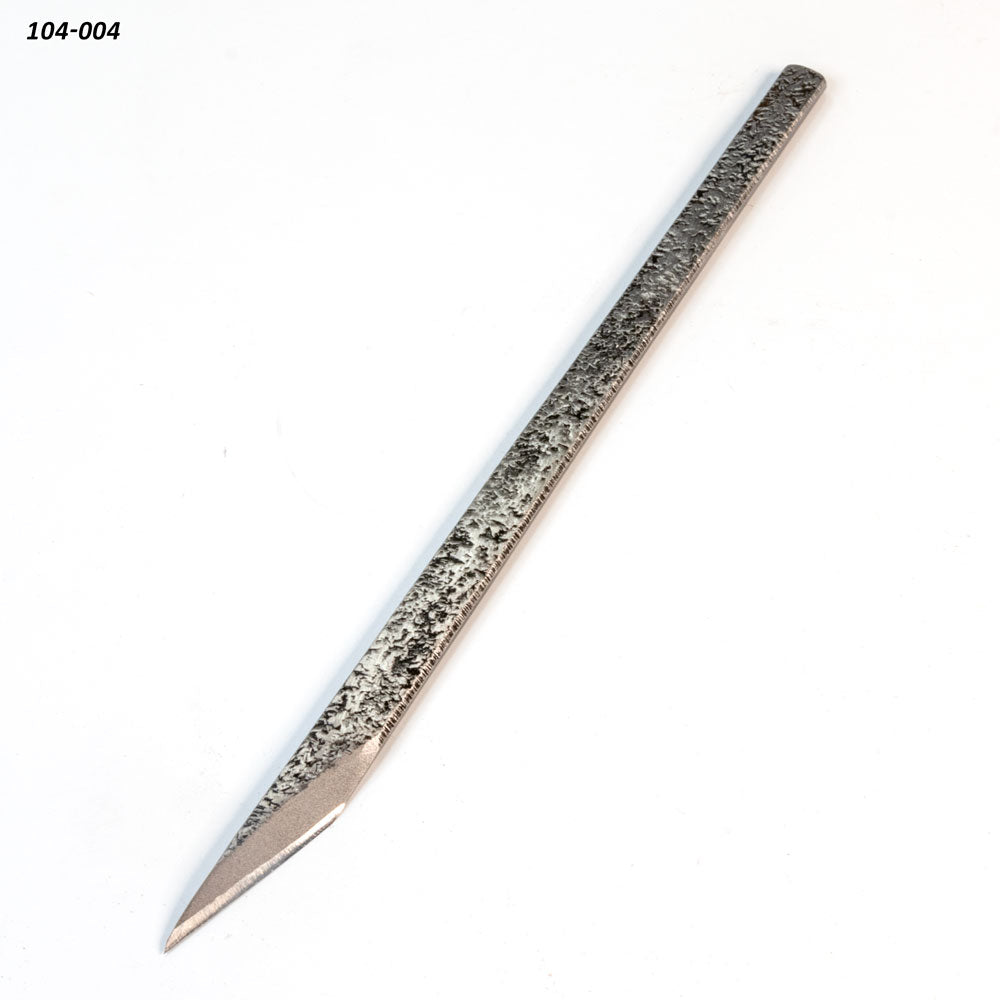Ikeuchi has been making knives in Miki City since 1953. Founded by Shozo Ikeuchi, the business was later joined by his sons, and now his grandson, Hiromi Ikeuchi continues the tradition. Miki City itself has been renowned for its tool making industry since at least the Edo period (it’s like the Sheffield of Japan), and these knives are an excellent example of the high-quality tools and hardware produced in the area. Made of premium Aogami #2 Steel, these marking knives are extremely sharp right out of the box, and have excellent edge retention.
Features:
-
Aogami #2 Steel Blades
- Sometimes called Blue Paper Steel due to the color of the paper the steel comes wrapped in when sent to the blacksmith, Aogami is generally considered the premier Japanese steel for high end knife making.
- Aogami Steel is a high carbon steel that has very few impurities. Tungsten and chromium added to improve wearability, setting it apart from other Japanese steels such as Kigami (Yellow Paper) and Shirogami (White paper).
- Of the three types of Aogami steel (#2, #1, and Super) Aogami #2 is considered the “toughest”, if not the hardest, due to its ability to resist chipping, retain an edge, and continue to cut well even as it begins to dull.
- Long Narrow Blades - At 9mm wide (0.35 in), 2 mm thick (0.079 in), and 17 cm long (≈7 in), these knives are perfect for marking detailed joint lines, especially dovetails, where the narrow blades allow you to mark inside very small pin sockets when transferring marks from the tail board to the pin board.
- Chisel ground - Flat on one side and beveled on the other, allowing you to mark right up against your reference workpiece or ruler without straying off course or marring the mating part.
- Available in both right hand (104-003) and left hand (104-004) configuration, corresponding to which hand you prefer to use it in. We reccomend picking up both, regardless of dominant hand, as having the pair often comes in handy when getting into tight spaces, depending on the orientation of your work and what you're trying to mark.

Ikeuchi carving knives are hand forged in small batches at a facility operated by three generations of master craftsmen. Since 1953 the family has been making knives in Miki City, Japan, renowned for its tool making industry since the Edo period. These knives are an excellent example of the high-quality tools and hardware produced in the area. These knives have a single-bevel “chisel grind” common to many Japanese knives, meaning the backs are flat with a center hollow, and beveled on the other. This type of grind can make honing easier, and allow for more controlled cuts.

Each knife shape has a name and a specific purpose.
- Ken - Pointed tip knife, similar in shape to a striking knife, great for marking out, getting into and cleaning out tight spaces, and starting small texturing details.
- Hira – Standard chisel-like shape, useful for paring cuts and heavier stock removal.
- There are two general purpose knives, excellent for any kind of basic cut. One is designed for use with your right hand and the other for your left. Right Hand Knife – General purpose carving knife excellent if you need to make a cut using your right hand. Left Hand Knife - General purpose carving knife excellent if you need to make a cut using your left hand.
- Kuri – Narrow bladed straight knife perfect for inside detail work
-
Mikadzuki - Crescent Shaped narrow bladed knife great for detail work and easing gentle curves in your piece.
- Yoko Is Shaped like a right-handed marking knife, or an extreme skew chisel, and is useful for detail work and angled paring cuts.

Each knife comes with a protective sheath and is extremely sharp right out of the box. There are made of premium high carbon Aogami #2 Steel with very few impurities. Aogami #2 is considered the “toughest”, if not the hardest, due to its ability to resist chipping, retain an edge, and continue to cut well even as it begins to dull. Aogami is generally considered the premier Japanese steel for high end knife making.

These knives make excellent introductory carving tools or additions to a growing set of tools. They are also unique enough that they make a great gift set for the carving enthusiast in your life, no matter how complete their collection.

Ikeuchi knives are available individually in seven useful profiles, or as a full set with a rugged canvas tool roll. Start your collection today with this exclusive, cost-effective seven piece set of premium Japanese carving tools.








